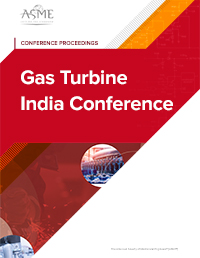Abstract
Well-stabilized vortices inside a physical cavity using direct injection of reactants can be used to provide stable combustion with performance benefits. The adaptation of the Trapped Vortex Combustion (TVC) concept involves the placement of the cavity-based flame stabilization device in the main duct of the combustor using annular or planar geometric configurations. In this work, we compare the performance of inner annular, outer annular and planar arrangements of the cavity with dual-vortex structure configuration enabled by a single injection port on the upstream wall of the cavity. The comparison is done using Reynolds Averaged Navier-Stokes (RANS) simulations. The effect of cavity implementation methods on the flame stabilization, temperature distribution at the exit of the combustor and pollutant emissions are analyzed with three combustor operating conditions based on the flow parameters. Significant differences in the flame stabilization are observed in the combustors due to the dissimilarity of the velocity and fuel distribution. The parameter, jet momentum flux ratio, denoted by J, is defined based on the inlet conditions and the estimate of actual cavity flow velocity from numerical results. This parameter is used to correlate the combustor performance among the various configurations studied. The inner annular combustor can be scaled to higher power by increasing the combustor radius (R) with same cavity size, flow parameters and chemical parameters, however, the flame stabilization and performance are affected by the geometric parameters, combustor radius (R) and cavity depth (D). Strategies to scale-up the combustor to obtain the required performance are discussed along with the challenges faced in comparing results of the various configurations studied.












